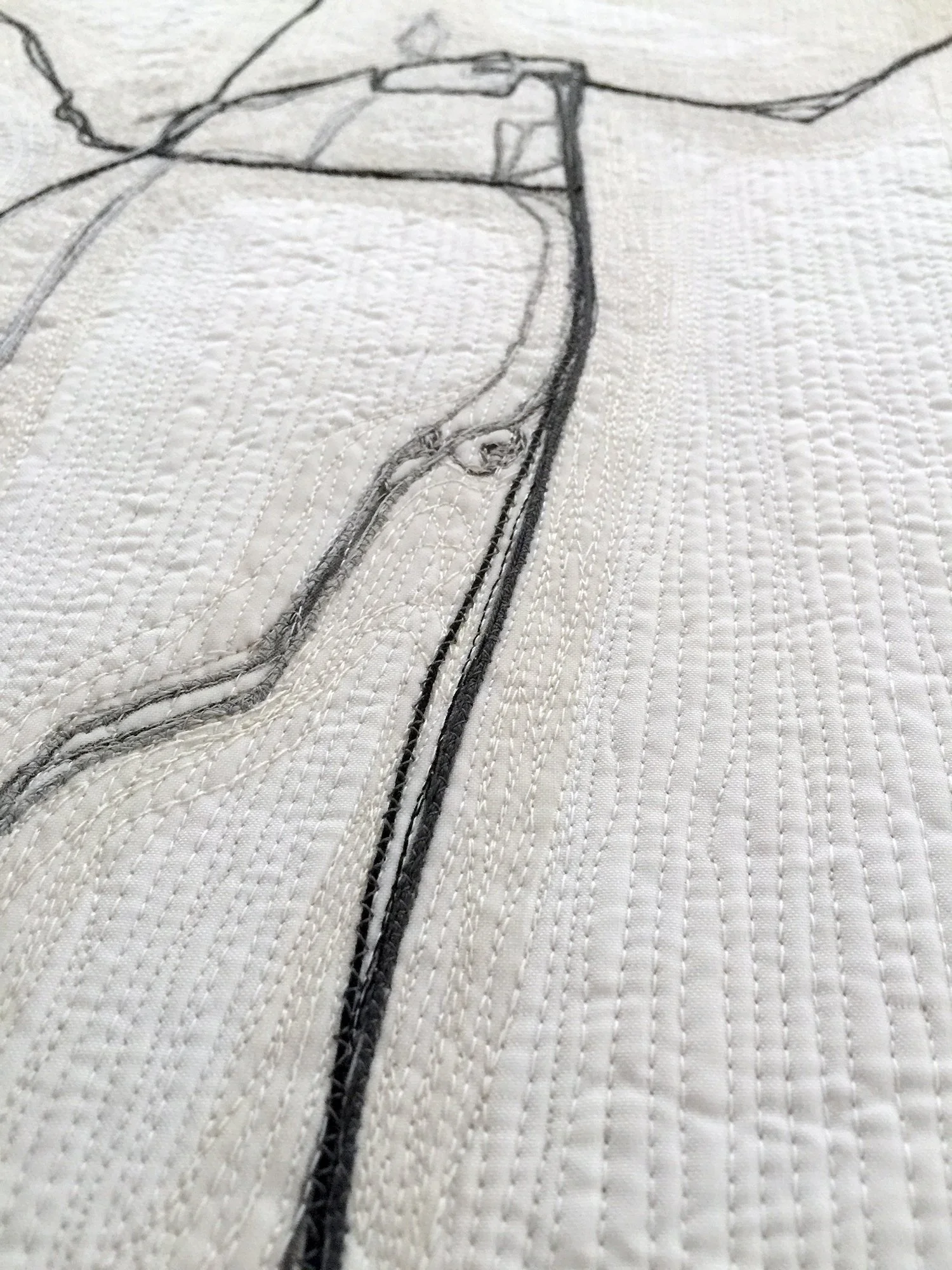11 words (2025)
I play with soft materials to make sense of hard things.
71 words (2024)
I make coverings and other things with discarded textile, paper, and sometimes with found materials. Obsessively crafted and super tactile, my work takes the form of densely stitched quilts, dissected maps, book-like structures, altered garments, and other various devices from miniature to installation scale. I consider my art-making to be a material practice of attention——I track everyday arrangements of so-called ordinary life and twist, fold, project them into alternative dimensions.
167 words (2023)
I consider my work to be a material practice of attention. I try to capture the feelings of systems we belong to but can't always see.
The things I make are double-edged. They are so-called ordinary things projected into other dimensions. They are often constituted from waste streams and offcuts of existing systems. They are made to be seen and handled from multiple sides. They have fronts and backs, insides and outsides. They open and close, fold and unfold. They are obsessively tactile. And they meander across scales, from global logistics to the tiniest domestic detail.
I play primarily with discarded textiles and paper, and sometimes with found materials. Textiles I stain stretch, pull, wrinkle, wrap, stitch, and tear between abstract and everyday dimensions and processes. With paper, I cut, rip, shred, and pulp its tangled associations with administration, identification, and truth-telling but also with secrecy, forgery and fiction. Other materials I occasionally find and follow down rabbit holes into territories of all various shades of grey.
306 words (2021)
I work in the grey areas between built environments and digital worlds, between urban landscapes and so-called natural ones, between flows of people and flows of data. I believe in the high value of craft as a form of thinking outside of the digital loop — not as an antidote to the digital experience, but as a practice that opens up new relations for our always digitally mediated bodies, a material practice of attention that can potentially think the network.
From the scale of the tiny detail to the global infrastructural, I wonder how technologies of care, security, and surveillance manifest differently in different places along different bodies. I follow the material footprints of these systems, tracking how they give us our shapes in the world. I like to play around with their lines and forms, and sometimes I break them.
I craft conceptual objects under the name B-PLOT, a specific language and methodology of working rooted in materiality and spatial experience. B-PLOT makes coverings, books, and other things that share certain qualities. They are double-edged objects. They are constituted from the in-between spaces and off-cuts of existing systems. They are made to be seen and handled from multiple sides. They have fronts and backs, insides and outsides. They open and close, fold and unfold. And they are carriers of meanings that circulate. They are technologies of information.
What can material objects say about supposedly immaterial things? I think of objects as systems and systems of objects, and I imagine B-PLOT objects as alternative geographic information systems — alternative to the digital devices we so often use to locate, to situate ourselves. Alternative GIS devices hold subplots of bodies, buildings, and landscapes. They organize, store, and share data in ways not normally conveyed by digital communication technologies, they resituate ourselves, and they variously generate joy, discomfort and connection.
—Jess Blaustein

